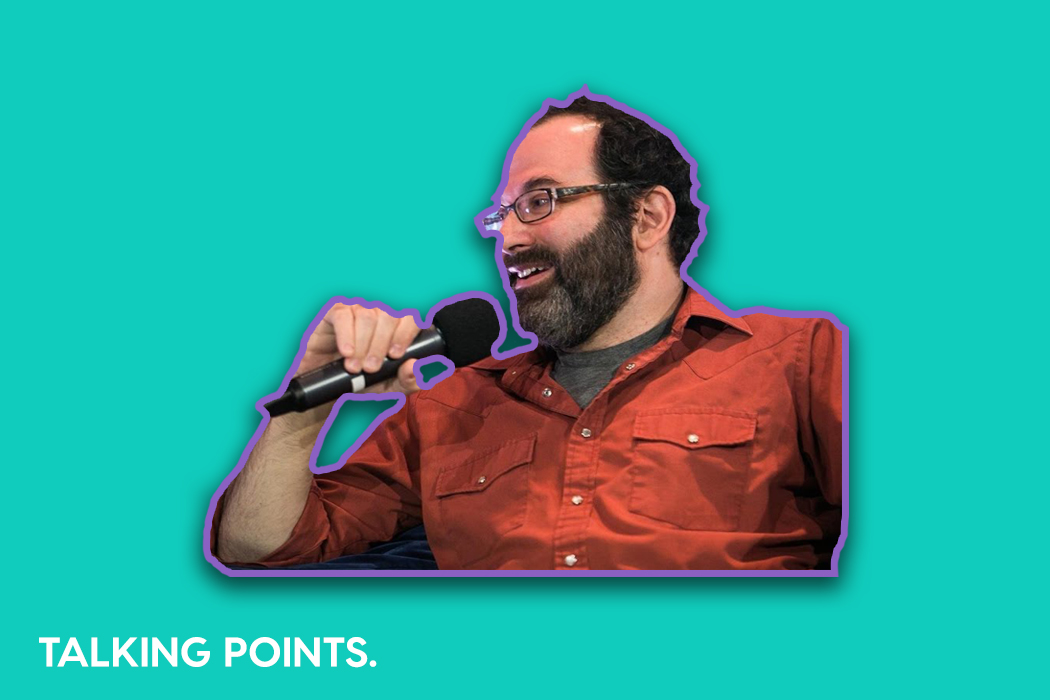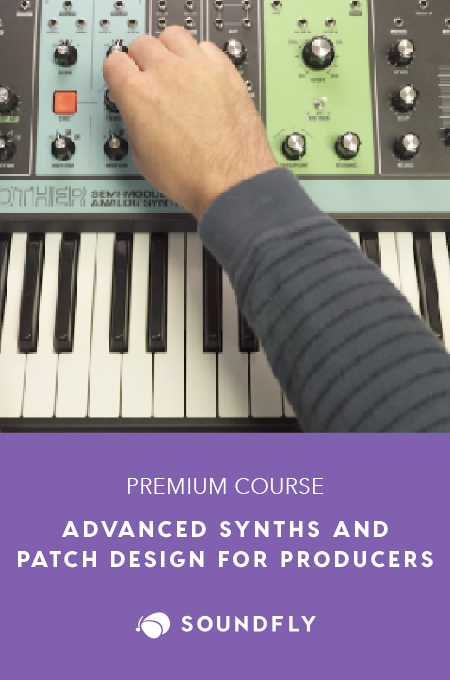
Welcome to our brand new column, Talking Points. In each post, we revisit a lengthy lecture or Q&A with the greatest minds in music production and composition, and elucidate the most interesting details or concepts mentioned by each guest in order to gain a fresh perspective on the topic in question. Follow along with the series here, or sign up for our newsletter to get all the articles, all the lessons, all the time!
Today on Talking Points, we take a closer look at famed Montreal recording engineer Howard Bilerman’s talk from the Red Bull Music Academy 2016. In it, he talks about his experiences working at the Hotel2Tango studio, recording to tape, recording over 400 albums, producing Arcade Fire as well as the late Vic Chesnutt, and getting to know Leonard Cohen. But we’re only going to focus on his recommendations for recording, mixing, and working in the studio, because this is a pretty long interview.
1. Hearing bands play live informs how we should strive to capture them in the studio.
Bilerman started out by recording his friends’ bands live at their shows. That slowly transitioned to doing “live in studio” sessions, which ultimately led to more in-depth studio production techniques. But in all of this, the through line is to not get too caught up in relying on the studio to make your record sound good, isolating everything and doing a thousand overdubs. It should all start with capturing the energy, the ferocity, and the magic of a band playing together at the same time, because that’s what leads to capturing the truest artistic expression sometimes.
He says to think of making records like “a live performance delayed by space and time.”
2. The only way to survive as an engineer is to learn how to accommodate any sound situation.
Too often, live sound and studio engineers will try to alter a band’s sound and performance practice to suit their own needs.
“We shouldn’t do it like this because we won’t get a crisp sound…” Well, okay, but this is how we play, so if we do it another way, we won’t be able to perform our best or sound like ourselves. When you start changing the fundamental aspects of how a band plays together in real time, making it uncomfortable for them or trying to tell them how to play their music, you start putting up obstacles to making the best record you can make.
Bilerman says that in order to combat this, it’s important to do the following:
- Learn as much mic technique as possible, which mics to use, and when to use them most effectively.
- Learn from every session — the high points and the mistakes.
- Find compromises that you (and the band) can live with, and move on.
In the end, it’s about the band. So you as an engineer need to accommodate anything a band throws at you, because this is their record, not yours.
3. What you pay for rent directly correlates to what you should be charging your clients.
This is an easy one.
4. The reason Arcade Fire’s Funeral sounds so refreshing is that all of the songs were recorded with totally different setups.
“Sometimes the drums have one mic, sometimes there’s 10 mics, sometimes three.”
Every song on Arcade Fire’s Funeral was recorded with very little extra time for fiddling around, so the focus was completely on the music. As a result, listeners don’t even really notice the discrepancies between the sound of the bass guitar between tracks, for example. Bilerman calls this record “a mixtape.”
While this isn’t a straight piece of advice for recording, there’s something to be said about albums that don’t feature 10 versions of the same song, sounding exactly the same every time. Vary things up, try new things, get creative, cater your recording style to the constraints of each song to try to get the best result. I think this is proof that listeners don’t really care as much about consistency as just simply whether what they’re hearing is good and interesting.
5. Fake it ’til you make it, basically.
At the beginning, you might not have all the answers. But the band doesn’t want to be working with an engineer who looks scared, anxious, nervous, under pressure. You gotta just put on your game face and pretend like you’ve seen it all before, until eventually, you don’t need to fake that face anymore!
6. If you take too long to set it up, the band gets bummed.
Bilerman has this great quote:
“What I learned a long, long time ago in recording is that if you take too long setting up mics, people get f*^king bummed. Because people are coming to perform — in some cases they’re spending their own money, in some cases it’s a lot of money. They have a limited amount of time. If they show up and you’re spending, like, three hours trying to get ‘the perfect drum sound’ when their adrenaline is waning, now they need to eat, and they’re tired, now they’re bummed that four hours has passed and nothing has happened — that’s a shitty situation for everybody.”
The basic takeaway here is that you should just get things sounding basically “good” at first, and then you can tweak as you go. He explains that it’s not like you set everything up perfectly, and then flick a switch and hit record and you’re done. The band makes adjustments, they need to warm up, go over parts, rehearse, run things a few times, etc. In all that time, you can assess your mic situation and make small changes to make it sound great. And nobody even has to notice.
7. Limitations make better art.
The final talking point I wanted to emphasize is a big one — perhaps the biggest. Bilerman, like many engineers in his generation, got his start working with magnetic tape, 16-track 0.5 and 24-track 2″ tape. About 300 records he worked on were done exclusively using tape before his studio started moving towards Pro Tools.
When working with tape, you don’t have endless options for tweaking or endless tracks to add if something doesn’t sound right. There are a finite number of tracks you can record to on a magnetic band, and every time you hit record, you’re using space and time on that reel. It’s not like working in a DAW. If something isn’t right and you know it, you can go back and rerecord over that section of tape, but you only have so much of it available since it’s expensive.
What that means is that the recording process is more front-loaded with getting the best performance, and making sure the mics are set up in the best way, rather than going into recording knowing that you can change things later. The performances are therefore better, the stakes are higher, and there’s less need for endless overdubbing and studio trickery. With limitations such as using tape, the performer needs to think about the arrangements a little bit more closely, forcing them to reexamine the most important sonic aspects of every song.
Limitations like this produce better records — not because they sound better, but because they’re performed better. Whether you’re working on tape or in a DAW, thinking about the luxury of being able to “change things later” distracts you from recording the best possible performance of a song. Perhaps there’s no better line in this entire interview than when Bilerman says:
“Do we need to triple track the tambourine? When you’re recording to tape, you can’t! It’s like, if you triple track the tambourine, ‘I’m sorry, band, there’s no lead vocals on this record.’”
I’ll leave you with that.
Improve all aspects of your music on Soundfly.
Subscribe to get unlimited access to all of our course content, an invitation to join our members-only Slack community forum, exclusive perks from partner brands, and massive discounts on personalized mentor sessions for guided learning. Learn what you want, whenever you want, with total freedom.




